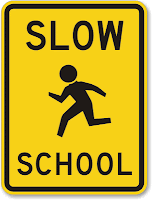Touch screens aren’t just for laptops, smartphones and tablets.
They have also made their way into new vehicles. Computerized controls now replace traditional buttons and knobs for heating, A/C, side windows, radio and other functions. A touch keyboard is built right into the computer screen. To touch it accurately, you have to look at it carefully -- which is hard to do when you are trying to drive carefully.
Why are auto makers using touchscreens?
The auto makers are trying to find ways to build ever more functions into the limited space that’s available on a dashboard or centre console. Touch screens are an impressive technology; they look terrific and can display a massive amount of information. But they shouldn’t be the only controls on a dash.
If we like
touch screens on our mobile devices, what’s wrong with having them on our
dashboards?
The problem has to do more with the
"screen" than with the "touch." On your smartphone, you
look at the screen and interact with it directly; the visual feedback is
necessary for operating the interface.When you're driving, however, you're supposed to be looking through the front window, operating most of the controls with only a quick glance. But with controls shifted to the touch screen, you have to take your eyes off the road to look at the screen.
Touch screens, unlike knobs with various shapes, don't allow that kind of “eyes on the road” operation. Small buttons on smooth glass surfaces demand your visual attention, and that could cause an accident.
How much
visual attention is needed?
It can be considerable. For
a significant part of the day, it’s hard to even see what’s on the screen, as sunlight
streams in from the rear--if you’re driving west in the morning or east in the
afternoon. Finger smudges accumulate
on the screen too, and make it opaque.
Since most
touch screens are very sensitive, it’s especially easy to activate a function
that you don’t want. Then you have to take your eyes off the road for an even
longer time just to return to where you started.
How serious
is this problem?
The touch screens are so complex, and sometimes operate so poorly, that they have lowered the auto industry's overall
quality score in the J.D. Power and Associates 2012 initial quality
survey. Also, touch screens are a major
source of frustration for buyers of new models.
General Motors is even training customers in the use of the
touch screen when they’re at the dealers and then offering help after the sale.
The auto maker calls customers after a car purchase to see if they are having difficulty with the technology and may
even make house calls. Touch screens are a classic case of a
“solution” looking for a problem—and creating one.
For information about PRUDENT VALUE CARS, visit www.prudentvaluecars.com










